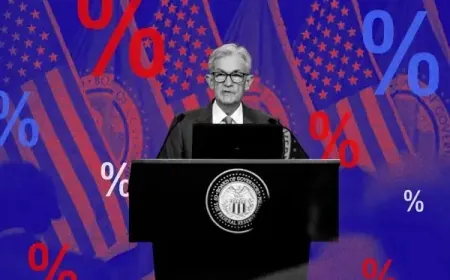Canada Introduces Regulation for Fiat-Backed Stablecoins in 2025 Budget
Canada’s 2025 federal budget establishes a legal framework for fiat-backed stablecoins, giving the Bank of Canada oversight and issuers mandatory reserve and redemption requirements.

Canada has announced plans to regulate fiat-backed stablecoins as part of its 2025 federal budget, marking a major policy shift in how the country approaches digital assets. The legislation seeks to create a clear legal framework for issuing and using stablecoins — a growing segment of the crypto market now central to global digital payments.
What the New Law Covers
Under the proposal, issuers of fiat-backed stablecoins will be required to:
-
Maintain adequate asset reserves matching their issued tokens.
-
Provide transparent redemption policies for users.
-
Implement risk and privacy safeguards for Canadians’ financial data.
-
Comply with national security requirements to prevent misuse.
The government said these measures are designed to ensure that stablecoins used in Canada are “safe and secure for consumers and businesses alike.”
Bank of Canada to Oversee the Framework
To manage and enforce the new regime, the Bank of Canada will allocate $10 million over two years (starting in FY 2026–27) from its remittances to the federal treasury.
Afterward, ongoing supervision will cost about $5 million annually, covered by fees collected from licensed stablecoin issuers.
The budget also proposes amending the Retail Payment Activities Act to expand regulators’ authority over payment service providers that deal in stablecoins — giving the central bank a clearer mandate to monitor systemic risk.
Stablecoins Are Now 30% of Global Crypto Activity
Stablecoins have evolved from niche tools to a key pillar of crypto finance.
A TRM Labs report estimates they account for 30% of all crypto transactions, with global trading volume surpassing $4 trillion between January and August 2025 — an 83% year-over-year increase.
Most stablecoins are pegged to the U.S. dollar, with Tether (USDT) and Circle’s USD Coin (USDC) controlling the majority of the market.
Canada’s move puts it alongside the U.S., Hong Kong, and the EU, all of which have launched their own regulatory frameworks in 2025.
Industry Response: “Canada’s Answer to the U.S. GENIUS Act”
Canadian industry leaders have largely welcomed the decision.
Morva Rohani, Executive Director of the Canadian Web3 Council, called the measure “Canada’s answer to the U.S. GENIUS Act,” saying it could create a path for qualified innovators to issue stablecoins under federal oversight.
Crypto exchange Shakepay also praised the move, calling it “a big step forward for fintech and digital payments in Canada.”
A spokesperson said the focus now should be on “making sure the framework stays open and accessible, so Canadian fintechs can build trusted payment rails.”
Caution from Regulators and Economists
Despite optimism, not everyone is convinced.
The Bank for International Settlements (BIS) has repeatedly warned that stablecoins — especially those pegged to fiat currencies — could:
-
Undermine central bank control over monetary policy.
-
Increase capital flight from developing economies.
-
Expose users to liquidity and transparency risks.
Canadian officials say these concerns justify proactive regulation before stablecoins become deeply embedded in the country’s payments system.
Ottawa’s Stablecoin Rules Aim to Close Canada’s Fintech Gap
The 2025 budget outlines Ottawa’s first concrete move to regulate fiat-backed stablecoins, giving the Bank of Canadadirect oversight of issuers and reserve management. The framework seeks to integrate stablecoins into Canada’s payments infrastructure while ensuring full backing and redemption rights for users.
Officials say the step is intended to close the regulatory gap with markets like the U.S. and European Union, where clear stablecoin laws are already in force. By setting national standards, the government aims to attract compliant fintech issuers and reduce reliance on foreign-backed digital assets circulating in Canada.





























































